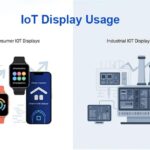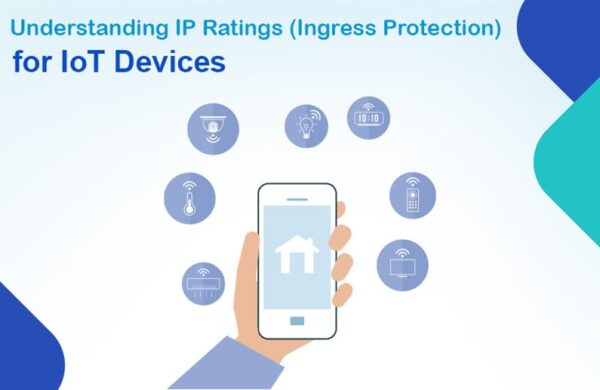As the Internet of Things (IoT) continues to advance, how users interact with devices has become a key factor in their functionality and user satisfaction. One of the most impactful advancements in this space is the integration of touchscreens in IoT devices. Whether used in consumer products or industrial equipment, touch-enabled interfaces bridge the gap between humans and smart technology, enabling smoother, more intuitive interaction. In this blog, we’ll explore how touchscreens add value to IoT devices by elevating both user experience and operational efficiency.
1. The Rise of Touchscreen Integration in IoT
Touchscreens are no longer limited to smartphones and tablets. Today, they are increasingly being embedded into a variety of smart devices – from home thermostats and kitchen appliances to factory sensors and control units. As IoT ecosystems become more sophisticated, the demand for direct, on-device interaction has grown. Touchscreens provide an adaptable, intuitive, and efficient interface to meet evolving needs.
2. Enhancing User Experience in Consumer IoT
When it comes to consumer electronics, convenience and usability are top priorities. Touchscreens play a crucial role in making smart devices more engaging and accessible for everyday users.
a. Intuitive Interactions
One of the most prominent benefits of touchscreens in IoT devices is the ability to offer direct control. Instead of navigating through complex mobile apps or relying on voice assistants, users can interact with the device itself. For example, a smart mirror might allow users to adjust lighting or check weather forecasts simply by tapping on the screen.
b. Dynamic and Adaptive Interfaces
Touch-enabled IoT devices can adjust their display based on context. A smart oven, for instance, can walk the user through recipes step-by-step using interactive visuals. Similarly, a smart thermostat can adapt its UI to show different settings during summer and winter, making the device easier to operate throughout the year.
c. Reduced Dependency on External Devices
While mobile apps remain integral to IoT ecosystems, not everyone in a household may have the app installed. A built-in touchscreen ensures that guests, children, or elderly users can operate the device easily without needing additional tools.
d. Enhanced Visual Appeal and Multi-Functionality
Modern touchscreen interfaces improve usability while also contributing to a refined and visually appealing design. A smart speaker with a vibrant display looks more modern and sophisticated. Additionally, a single touchscreen device can serve multiple purposes, displaying weather, acting as a digital photo frame, or showing security alerts.
3. Improving Efficiency in Industrial IoT
In industrial environments, where time and accuracy are critical, touchscreens in IoT devices contribute significantly to operational efficiency and safety.
a. Real-Time Monitoring and Control
Industrial machinery often involves numerous configurations and parameters. With a touchscreen, operators can quickly view performance metrics, calibrate devices, or adjust all without needing a separate laptop or specialist intervention. This drastically reduces downtime and boosts productivity.
b. Clear Data Visualisation
Complex data can be visualised clearly on a touchscreen, be it temperature trends, pressure graphs, or production statistics. This visibility helps workers anticipate issues before they escalate, enabling a proactive rather than reactive approach to maintenance and operations.
c. On-Device Documentation and Alerts
Touchscreens can serve as hubs for documentation and alerts. Instructions, maintenance logs, and emergency procedures can be accessed or recorded right on the device. If a machine identifies a fault, the display can show a detailed message or even a video tutorial on what steps to enhance workplace safety and reduce human error.
d. Audit Trails and Security
Many industrial touch interfaces allow workers to log in and digitally sign off tasks. This not only creates accountability but also ensures traceability in high-stakes environments like manufacturing and healthcare.
4. A Case for Distributed Intelligence
As the IoT world matures, the idea of central control systems is evolving into a more distributed model. Touch-enabled IoT devices empower front-line users by putting control and data visualization at their fingertips. Each device becomes a point of interaction, making the entire system more responsive and resilient.
5. Best Practices for Touchscreen Implementation
While the benefits of touchscreens in IoT devices are clear, they are only realised when the interface is thoughtfully designed.
- User-Centric Design: Menus should be intuitive, icons should be meaningful, and workflows must align with user expectations.
- Responsiveness: Lag or delay can frustrate users, especially in critical applications. Smooth, fast interactions are a must.
- Durability: Especially in industrial settings, the touchscreen must be robust, with resistance to dust, water, and extreme temperatures.
- Accessibility: Consider users of all ages and abilities. Use clear fonts, adjustable brightness, and simplified navigation.
6. The Future is Touch-Enabled
With ongoing technological progress, interactions between people and machines are becoming increasingly smooth and intuitive. Voice and gesture controls are on the rise, but touch remains a universally understood method of input. From smart homes to automated factories, touchscreens in IoT devices will continue to play a central role in making connected systems more human-friendly and efficient.
Monarch Innovation recognises the importance of these trends and works to ensure that embedded touchscreen systems not only meet technical requirements but also deliver superior user experiences. With the right approach, touch interfaces can transform IoT products from complex tools into user-centric solutions.
Conclusion
Touchscreen technology is reshaping the way users engage with IoT devices, offering clarity, control, and convenience across both consumer and industrial applications. From simplifying daily routines in smart homes to streamlining operations on factory floors, the advantages of touch-enabled interfaces are clear. As these devices become more intuitive, interactive, and independent, they help bridge the gap between people and technology.
At Monarch Innovation, we specialize in delivering advanced IoT solutions tailored to modern user needs. From smart interface design to full-scale IoT development, our team ensures your product is equipped for performance, usability, and market success. If you’re looking to enhance your connected devices with intelligent touchscreen interfaces, Monarch offers the expertise and innovation to bring your vision to life.





